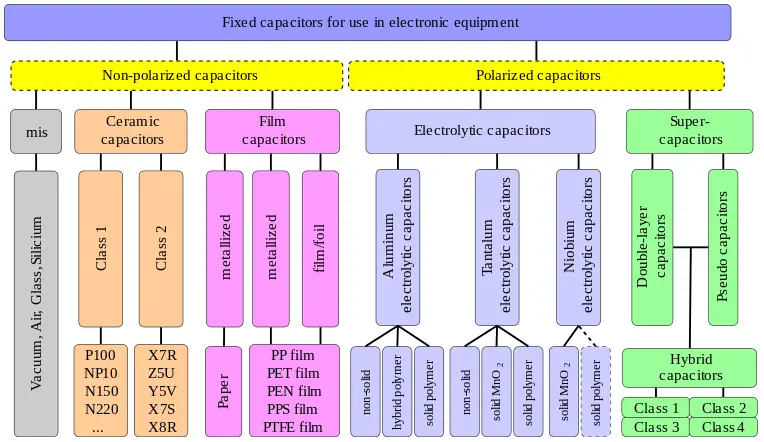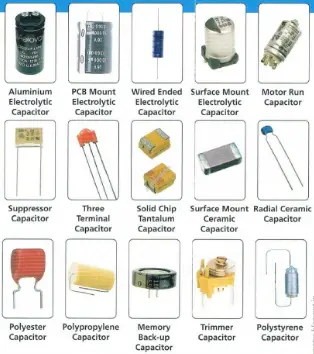- A capacitor is an electronic device which stores energy in the form of the electrostatic field.
- It consists of two parallel conducting plates which are separated by an insulating material known as the dielectric. The commonly used dielectrics in capacitors are paper, mica, air etc.
- These conducting plates could be in the form of rectangular, circular, spherical or cylindrical in shape.
- When it is connected to a power source, due to the potential difference one of the plates acquires the positive charge and another plate acquires the negative charge.
- The amount of charge that is stored in the capacitor is called as Capacitance of the capacitor. It is represented by the letter ‘C‘. The unit of Capacitance is Farad.
- Capacitance is directly proportional to the surface areas of the plates and is inversely proportional to the distance between the plates.
- Capacitance also depends on the dielectric constant of the material separating the two plates.
- A capacitor is also called condenser.
Definition of Capacitance
Capacitance is the amount of electric charge moved in the Capacitor (condenser) when one volt power source is attached to its terminal.
Capacitance is given by the following Equation:
C=Q/V
where,
C=Capacitance in Farads (F)
Q=Electrical Charge in Coulombs
V=Voltage in Volts
- The current through a capacitor is zero if the voltage across it is constant. That is why a capacitor acts as an open circuit to DC.
- A pure capacitor never dissipates energy, but only stores it.
- The voltage across a capacitor cannot change instantaneously since it would require an infinite current for this voltage change.
Types of Capacitor


image source: en.wikipedia.org/wiki/Capacitor_types
